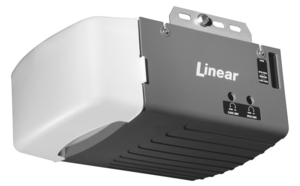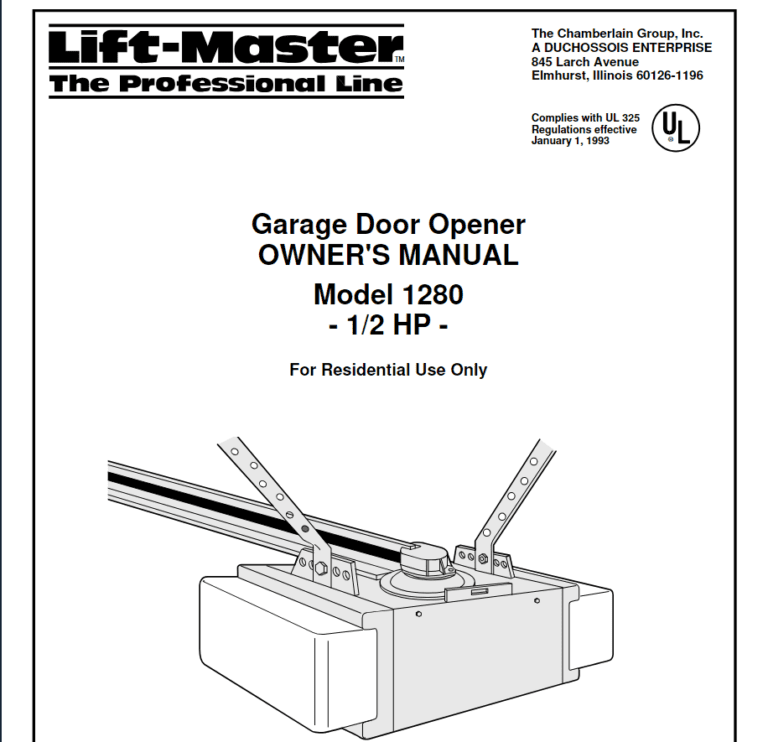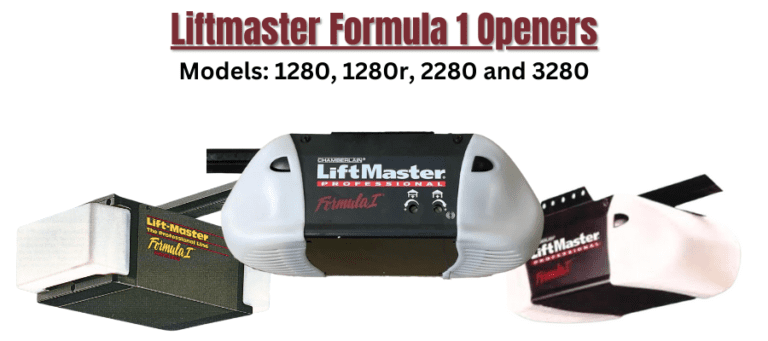Garage Door Rollers: Steps to Take to Maintain or Replace Your Garage Door Rollers

Garage door rollers can last between 10,000 and 20,000 door cycles. A single cycle refers to the process of opening and closing the garage door. Over time, the rollers may wear out due to the weight of the door resting on them, and they may need to be replaced. Taking good care of and properly maintaining the rollers will contribute to their longevity.
Here are some steps to guide you in properly maintaining the rollers on your garage door and what to do if you need to replace any of them.
What Kind of Garage Door Rollers Do You Have on Your Garage Door?
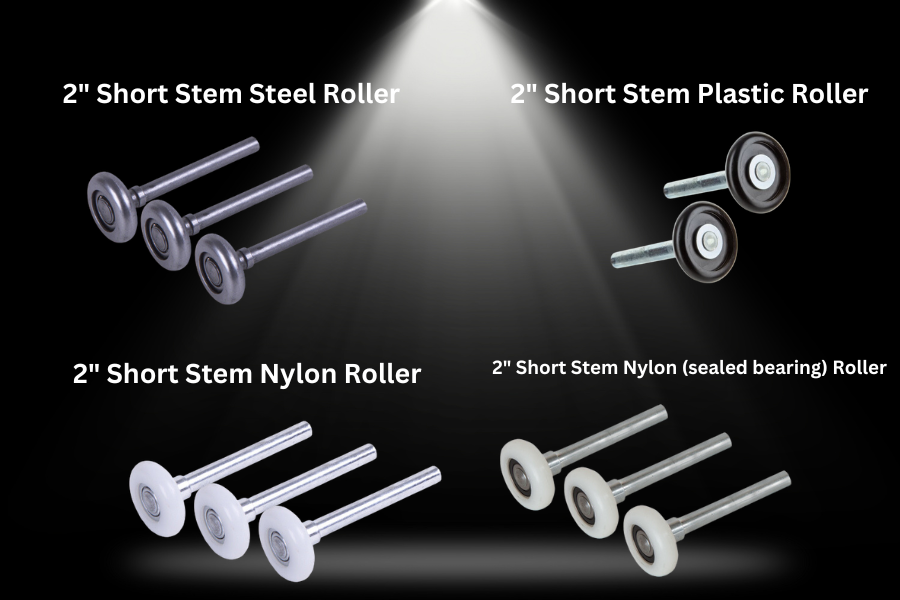
Types of Garage Door Rollers
There are generally three main types of garage door rollers: steel, nylon, and plastic.
1. Steel Rollers – They are highly durable and can withstand heavy garage doors. However, they can be noisy and require regular lubrication to prevent rusting. Steel rollers will have ball bearings that the wheel of the rollers roll on. Less expensive rollers will have 7 ball bearings while the better rollers will have 10 or 13 ball bearings. The more ball bearings the rollers have the quieter and longer lasting the rollers will be. A standard 10-ball bearing roller is going to have a life expectancy of 15,000 cycles while a 7-ball bearing roller will be closer to 10,000 cycles.

2. Nylon Rollers – These are quieter and smoother in operation compared to steel rollers. They also require less maintenance as they don’t rust. However, they may not be as durable with heavy-weight doors. The bearings will have a long life but if the track is uneven or has sharp edges then that can shorten the life of the wheel itself. Maintaining a smooth track, especially where the horizontal and vertical tracks meet will help in the longevity of the rollers. Like the steel rollers the more ball bearings the rollers have the longer the lifespan of the roller. A standard 11-ball bearing nylon roller will have a life expectance of 20,000 cycles.

3. Plastic Rollers – These are the cheapest option and are typically included with less expensive garage doors. They are quiet and don’t require lubrication, but they are not as durable as the other two types. The plastic rollers are not recommended for the simple fact that they won’t last very long. If you are going to go through the trouble of replacing the garage door rollers you might as well get something like a steel or nylon roller that is going to last more than a couple of years. A typical plastic roller is going to last 3,000 to 5,000 cycles.

Understanding the type of roller installed in your garage door will help you maintain them appropriately and make an informed decision when a replacement is necessary.
What is The Cost of New Rollers?
Steel Rollers: Steel rollers are the more affordable option, although they may produce slightly more noise compared to nylon garage door rollers. The 7-ball bearing steel roller is the cheaper choice, while the 10-ball bearing roller is more expensive but quieter option. The 10-ball steel rollers are going to be comparable in price to the 11-ball nylon rollers.
Nylon Rollers: If you want a roller that’s quieter and smoother, go for the nylon rollers. The 10-ball, 11-ball or 13-ball bearing nylon rollers are good options, with the 11-ball bearing roller being a good middle of the road roller with a 20,000 cycle life expectancy. At the high end of the nylon rollers, you’ll find the sealed ball-bearing rollers. The advantage of these rollers is that the ball bearings are sealed inside the wheel, preventing dirt and debris from entering. As a result, the rollers will last a long time and require minimal maintenance.
Plastic Rollers: Plastic rollers will be inexpensive. As mentioned earlier, we don’t recommend using plastic rollers. However, if you simply need a temporary solution to keep your garage door functioning for another year or two, this is the most affordable option when it comes to replacing rollers.

Are All Garage Door Rollers The Same Size?
Wheel Size: Garage door rollers vary in size, but the standard size for residential garage doors is usually 1-3/4 inches for the diameter of the wheel of the roller. The rollers are usually referred to as 2-inch rollers (even though they measure 1-3/4 inches) but if you measure the garage door track you’ll find it is 2 inches. This 1/4-inch difference between the roller and the track allows for some movement of the wheel of the roller in the track.

Stem Size: The length of the roller stem is normally 3-3/4 inches to 4 inches in length. In some cases, a 6 or 7-inch stem roller may be needed. These are typically used in the very top section or very bottom section of the garage door. The longer stem allows the rollers to move out further to adapt to spacing in the garage door tracks. If you find your top rollers popping out of the track on occasion then going with the longer 6-inch stem roller over the 4-inch stem will alleviate the problem.


Commercial Rollers: Larger commercial size garage doors or large heavy wood residential garage doors may use a larger size roller. These rollers are typically 3 inches in diameter. The typical commercial roller is the 3″ roller with a 4″ stem but stem lengths can also be 7, 9 or 11 inches long.
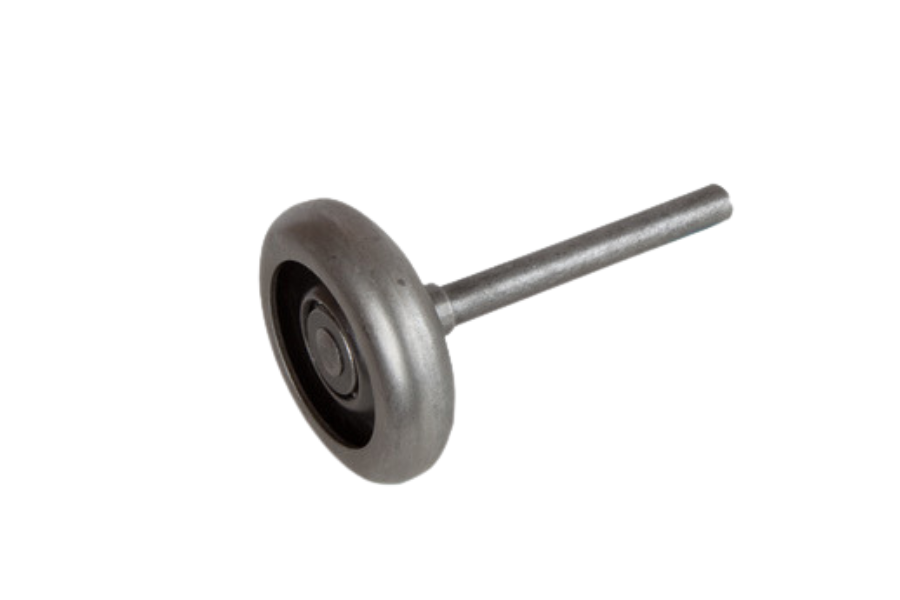
It doesn’t hurt to measure your old roller before purchasing replacements to ensure a proper fit.
Replacing Garage Door Roller Guide
Option 1: Guide for Replacing Garage Door Rollers (bending the track)
- Tools and Safety Measures: Gather the necessary tools for the job, which could include a clamp, pliers, a ladder, and of course, your new garage door rollers. Ensure you’re wearing appropriate safety gear, such as gloves and safety goggles.
- Secure the Door: Before you start, it’s crucial to unplug the garage door opener (if you have one) to prevent accidental activation. Use a clamp on the track above one of the rollers to keep the door secure.
- Remove the Old Roller: Use the pliers to bend the track slightly open just above one of the rollers. Carefully guide the roller out of the track. You’ll be able to move the roller out and away from the door hinge.
- Insert the New Roller: Slide the stem of the new roller into the hinge and align the roller with the track. Guide the roller into the track.
- Return the Track to its Original Shape: Re-bend the track into its original shape using pliers.
- Repeat the Process: Repeat this process for each roller that needs replacement. Make sure to not remove more than one roller at a time to keep the door secure.
- Test the Door: Once all the replacements are done, remove the clamp from the track and lower the door. Plug the automatic door opener back in and test the door to ensure it’s operating smoothly.
Remember, while this guide can help, if you’re uncomfortable with this process, it’s always best to call a professional. It’s important to note that the bottom rollers can be especially dangerous to replace due to the tension in the lift cables, so please exercise extreme caution or consult a professional.
Option 2: Guide for Replacing Garage Door Rollers (removing hinges)
- Alternative Method without Bending the Track: If you prefer not to bend the garage door track, there’s another method you can use, although it might be a bit more time-consuming.
- Secure the Door: As with the previous method, start by unplugging the garage door opener and securing the door with a clamp on the track to prevent it from moving.
- Remove the Hinge: Rather than bending the track, you will remove the entire hinge. Use a screwdriver or a power drill to unscrew the hinge the roller is attached to from the door. (Do not remove the bottom corner brackets! Please read the warning below before replacing the rollers on the bottom corner brackets).
- Replace the Roller: Once the hinge is removed, you can easily take out the old roller from the hinge and replace it with the new one.
- Attach the Hinge and Roller: Now, reattach the hinge—with the new roller in place—back to the door. Make sure to tightly screw the hinge back into its original position.
- Repeat the Process: Proceed with the same method for all the rollers that need replacement, making sure to work on one roller at a time.
- Test the Door: After all the rollers have been replaced, remove the clamp, lower the door, and plug the automatic door opener back in. Test the door to make sure it operates smoothly.
- EXTRA: If you are going to do this method, where you remove the hinges to install the rollers, then you may want to also consider replacing any hinges that are worn out or damaged at the same time. Check out our Ultimate Guide on Garage Door Hinges.
Again, always remember that if the process seems too challenging or risky, it’s best to consult with a professional, especially when dealing with the bottom roller. Safety should always be your number one priority.
Bottom Roller Replacement Warning!
WARNING: It is strongly advised not to attempt to replace the bottom garage door rollers of your garage door without professional guidance. This is because the bottom fixture brackets are attached to the garage door’s springs. These springs are under high tension and, if mishandled, can cause serious injury or even fatal accidents. This is a task that requires specific training and tools. Do not underestimate the potential danger. The garage door needs to be open so there’s no spring tension on the cables or the spring needs to be unwound to release the tension. When it comes to the replacement of the bottom roller, always seek professional assistance for your safety.
How to Lubricate Your Garage Door Rollers?
Lubricating garage door rollers is a critical aspect of maintaining the door’s smooth operation and prolonging its lifespan. By applying a suitable lubricant you will ensure that the door opens and closes quietly and smoothly. Additionally, lubrication can protect against rust.

Prepare the Door: Disconnect the garage door opener if you have one. This will ensure that no one opens the garage door while your hands are around the rollers and the tracks.
Clean the Rollers: Use a dry cloth to wipe away any dust, grime, or hardened grease on the rollers. A clean surface will allow the lubricant to penetrate better.
Choose the Right Lubricant: Use a high-quality silicone or synthetic-based lubricant. Avoid using a heavy oil or grease as it can attract dirt and cause the rollers to become stuck. And don’t use WD-40 as it will just get tacky and attract dirt.
Apply the Lubricant: Apply the lubricant to the roller and the hinge where the roller spins.
Work the Lubricant In: Open and close the door a few times to work the lubricant into the rollers.
Wipe Away Excess Lubricant: Use a cloth to clean up any excess lubricant that may have dripped onto the garage floor to prevent slips and falls.
Reconnect the Door Opener: Once done, reconnect the garage door opener and run a few tests to ensure the door operates smoothly.
How Often Should The Rollers Be Lubricated?
Maintenance is key to keeping your garage door working properly. Lubricating the steel door rollers should be done at least twice a year or more frequently based on usage. The nylon rollers probably only need a little lubrication once a year. And if you have sealed ball bearings then they won’t need to be lubricated but you could still use a little bit of lubricant on the stems of the rollers.
A good rule of thumb is to plan on lubricating your garage door rollers along with the hinges, springs and pulleys every spring and fall. This will be plenty for keeping your garage door in tip top shape.
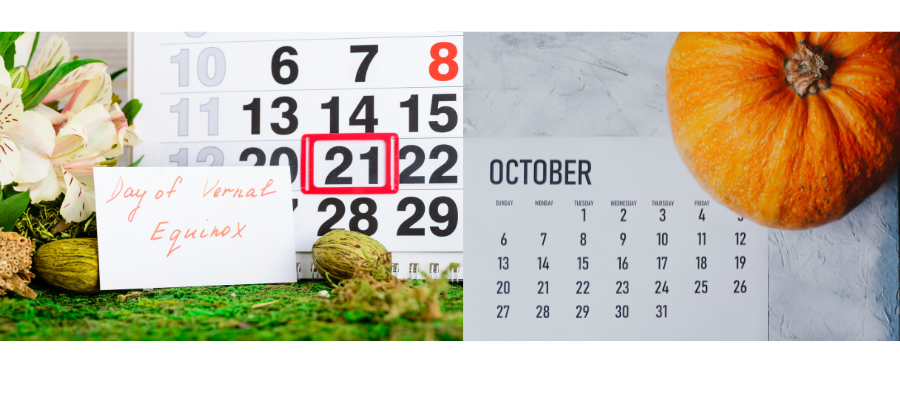
Frequently Asked Questions
- What Should I Do If My Garage Door Rollers Come Off the Track? If your garage door roller comes out of the track then follow one of the above procedures for installing the roller.
- How Long Do Garage Door Rollers Typically Last Before They Need Replacement? With proper maintenance, a good quality roller can last around 7 to 10 years. This will also be dependent on how often the garage door is used.
- Can I Replace the Rollers on My Garage Door Myself, or Should I Hire a Professional? As we mentioned earlier, it’s entirely possible to replace the rollers yourself. We do however caution the replacement of the bottom rollers due to the extreme pressure that is put on the bottom brackets. In that case, a professional would be recommended.
- How Do I Know If My Garage Door Rollers Are Damaged or Worn Out? A worn-out roller will typically show a wobble in the wheel or you’ll notice excessive wear or hear a crunching or squealing noise coming from the roller.
- Are There Any Specific Brands or Types of Lubricants Recommended for Garage Door Rollers? We recommended a silicone-based lubricant such as Blaster Garage Door Lubricant or a synthetic based lubricant such as CRC Chain & Wire Rope Lubricant. Both are excellent lubricants for the rollers, hinges and door springs.
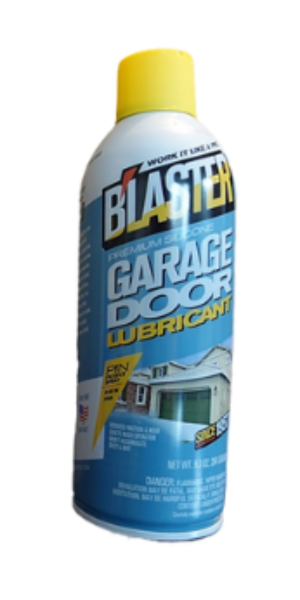

As an Amazon affiliate we earn a commission from purchases through product links.

